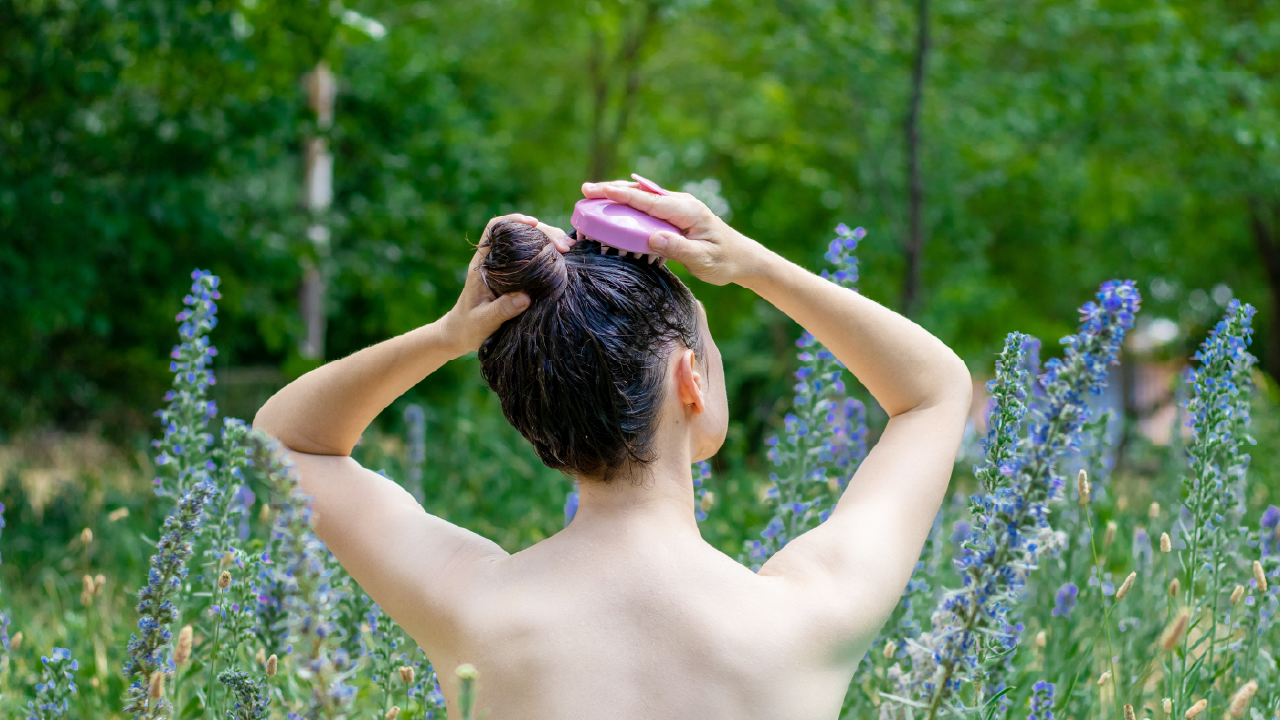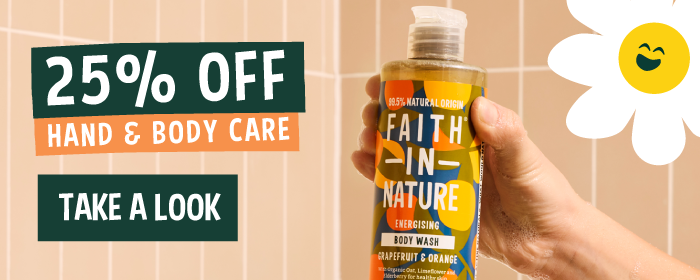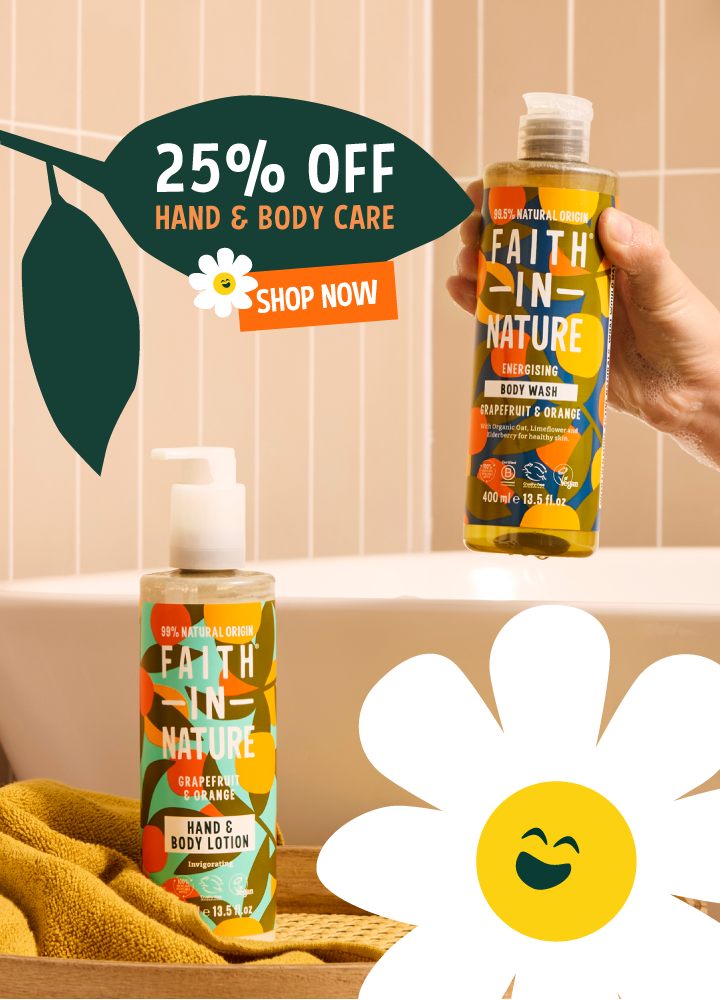
8, September 2025
How to Recreate a Japanese Head Spa at Home
Unless you’ve been living deep in the forest for the past few months, you’ve probably heard of Japanese head spas. With social media videos going viral and dedicated salons opening all over the UK, this is possibly the biggest haircare trend since rosemary oil. So, what exactly is a Japanese head spa? And can you recreate the trending treatment in your own bathroom?
What is a Japanese Head Spa?

A Japanese head spa is a holistic treatment for hair and scalp with a focus on wellbeing. It usually includes scalp analysis, deep cleansing, intense conditioning, massage and aromatherapy. Hair is rinsed with a ‘water halo’, an arched washbasin attachment that gentle cascades warm water on to the scalp.
Two Japanese traditions inspired the treatment: shiatsu massage and traditional onsen (those hot springs loved by macaques!). The idea is that you leave the salon with healthier hair, feeling completely relaxed. Keep reading to find out how to recreate the ritual at home (and feel as chilled-out as a monkey in a steamy mountain pool).
Scalp Care
One of the key principles behind Japanese Head Spas is scalp health. Haircare often focuses on the texture or condition of the strands themselves, rather than the scalp or hair follicles. But as we often say, healthy hair begins with a healthy scalp. Taking time to give your scalp some love can help your hair out too.
Scalps can be sensitive, so if yours is sore or itchy, it's best to speak to a doctor before trying any home treatments.
How to Do a DIY Japanese Head Spa at Home
Washing hair is something we often do in a hurry, but by spending a little more time on it every now and then, we can transform this essential task into a wonderful act of self-care. Here’s our guide to getting as close as you can to a Japanese head spa in your own bathroom.
Set the Scene
To create that luxurious spa feeling at home, make sure your bathroom is clean and uncluttered. Light some candles for a calming glow (fragranced with essential oils, if you like). If you’ve got a portable speaker, pop on a relaxing spa playlist to get you in the mood. Ideally, you’ll need the bathroom to yourself for about an hour.
1. Scalp Cleansing

Start by cleansing your scalp. Remember, this is way more than a bog-standard shampoo – it’s a pampering ritual! Wet your hair and take time to massage suds into your scalp with your fingertips in slow, circular movements. If you’re lucky enough to own a scalp massager, use it to really work the shampoo into your scalp.
Hair and scalp in need of a deep detox? Try our Seaweed & Citrus Shampoo. Many Japanese head spas use seaweed-based products because this natural ingredient is packed with minerals and renowned for helping to draw impurities from the scalp.
For a relaxing aromatherapy experience, reach for our Lavender & Geranium Shampoo. It’s made with Kent-grown lavender oil and geranium essential oils. Lavender oil has anti-inflammatory qualities and geranium oil is known to help balance the scalp. The aromas of both essential oils are famed for promoting feelings of balance and calm. Great at any time of day, but especially bedtime.
All our shampoos are made with essential oils. Lathering up slowly is a perfect opportunity to pause and breathe in those beautiful natural aromas.
2. Scalp Exfoliation
Japanese head spas usually include an exfoliation step to deeply cleanse the scalp and hair follicles of impurities. You can buy scalp scrubs, or research making your own. Alternatively, using a scalp massager to gently scrub your scalp and remove any build-up or dirt.
3. Scalp Massage
One of the key elements of a Japanese head spa is the massage. OK, a DIY scalp massage might not be quite as relaxing as a professional salon treatment, but this is all about self-care. As well as helping you feel calm, a DIY scalp massage can increase blood flow to the scalp, which is known to support healthier hair.
After rinsing away your shampoo, gently work your scalp in small, circular movements using your fingertips or scalp massager. Start where you forehead joins your scalp and cover every centimetre of your head until you reach the nape of your neck. It’s recommended to spend between five and 20 minutes massaging your scalp. Finish by gently pressing your fingertips to your temples. Bliss!
Does Scalp Massage Help Hair Growth?
Many hair trends (hello again, rosemary oil!) are based around the belief that they can help with growth. Sadly, in most cases, there’s no hard proof any of these remedies can magically help hair grow, but often (as is the case with rosemary oil), they can promote increased blood flow to the scalp and contribute to healthy hair follicles. And a healthy scalp and healthy hair follicles pave the way for – you guessed it – healthy hair.
4. Scalp Mask (with Optional Steam!)

The final step of your DIY head spa is a mask. Use one of our 99.5% natural origin hair masks: Coconut & Shea for dry hair & scalp, Shea & Argan for curly hair and dry scalp, or Rosemary for normal hair.
Apply your hair mask to generously all over your head, enjoying the gently cooling sensation on your head. Comb it through lengths and ends to coat all strands of your hair and massage into your scalp (again, with fingertips or scalp massager). Let it do its thing for 5-20 minutes.
At head spas, steam is often used at this stage to open the hair cuticles, allowing the mask to penetrate deeply. Fancy adding steam to your DIY spa? Soak a towel in hot water, wring it out (when it’s cooled enough to touch) and put it on your head, over the mask, for 10-15 minutes. You could also sit in a steamy bath while the hair mask gets to work. If you go for the bath method, we recommend adding a few drops of our Lavender & Geranium Body Wash so you can inhale those relaxing aromas. This might also be a good time to swap your spa playlist for a guided meditation or some Nature sounds.
5. Rinse – and Relax
Time to rinse – but this isn’t just any old rinse, it’s hydrotherapy!
If you have a handheld shower attachment, use this on a low setting to gently rinse away your mask. If not, try using a small watering can to softly cascade warm water over your head through the holes of the rose.
Pay attention to the sensation of the warm water sprinkling your scalp and the sound of the water flowing. These sensory benefits are things we tend to forget to tune into during our everyday showers, but they contribute to the overall relaxing experience of the Japanese Head Spa.
Afterwards, dry and style your hair with your usual method and products. Hopefully, you’ll be enjoying a sense of tranquillity and calm, your hair and scalp will be feeling and looking healthier – and you’ll be looking forward to more self-care at your next DIY Japanese head spa.
If you liked this, you might enjoy:



